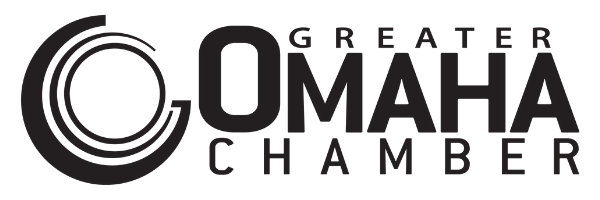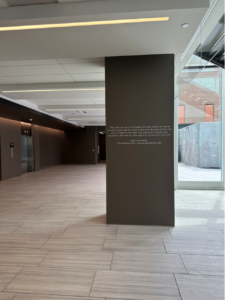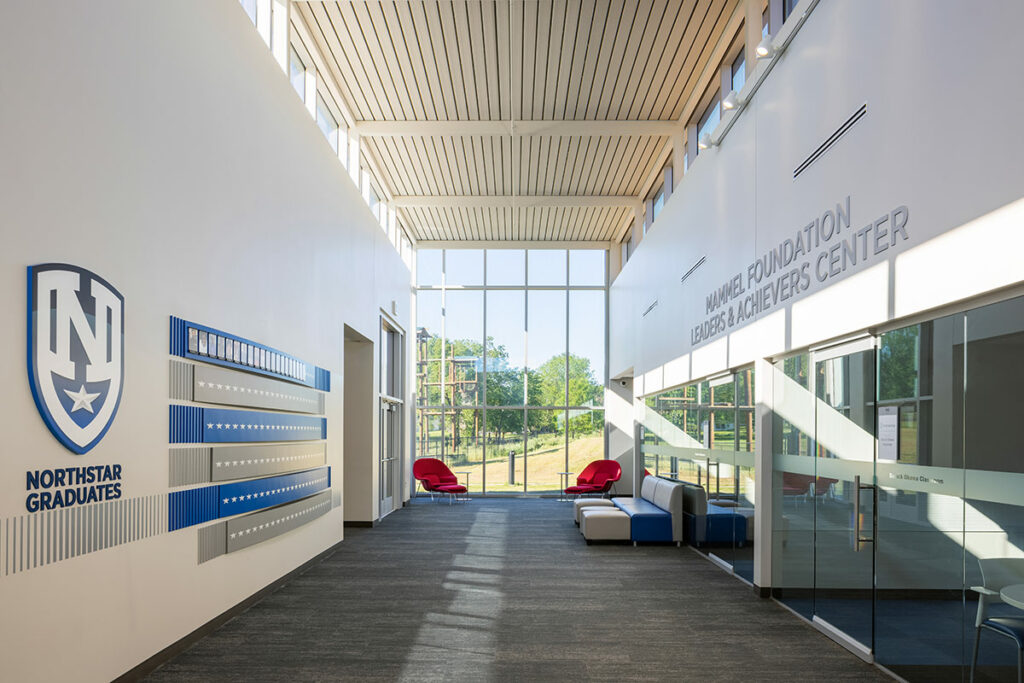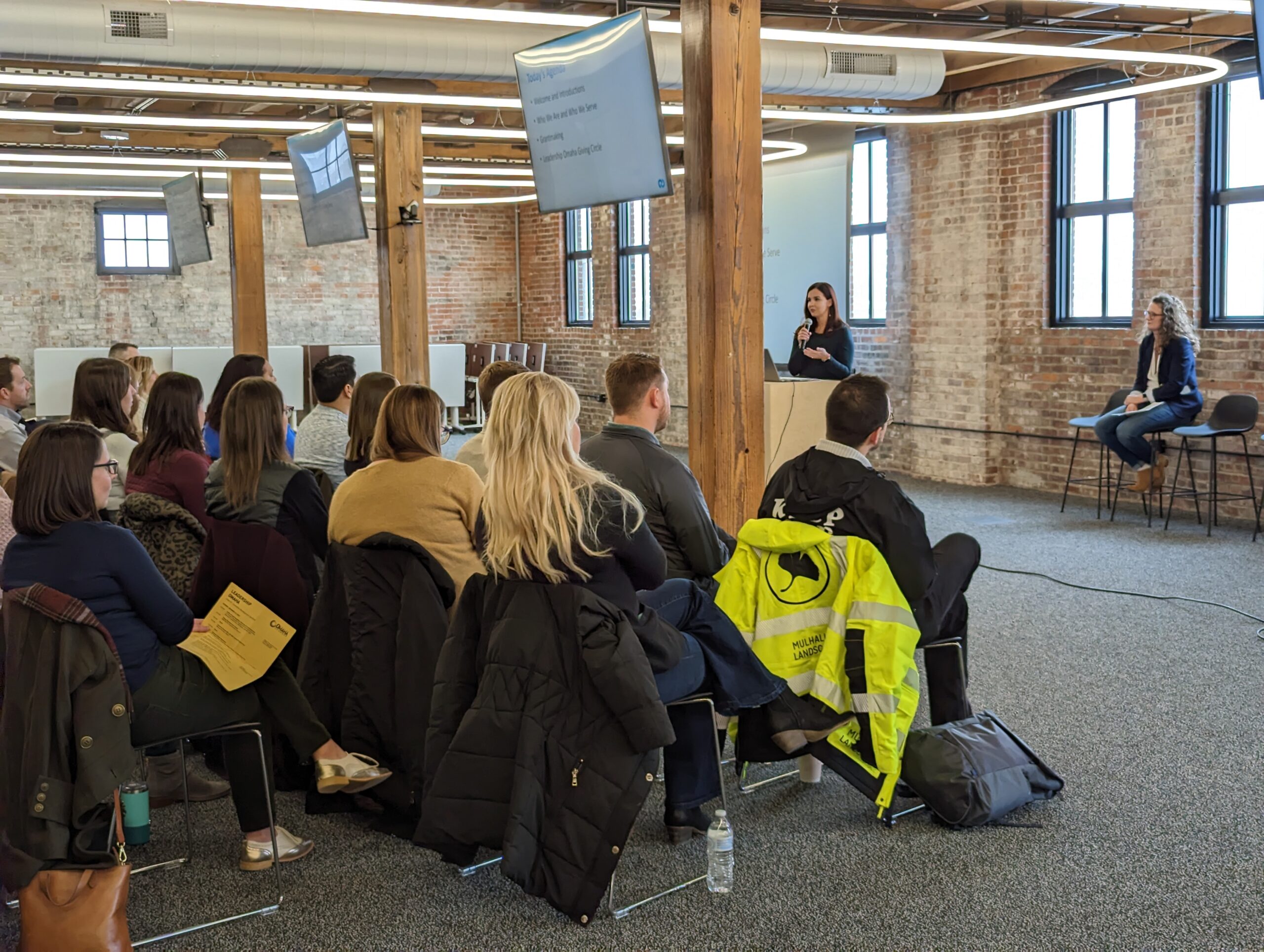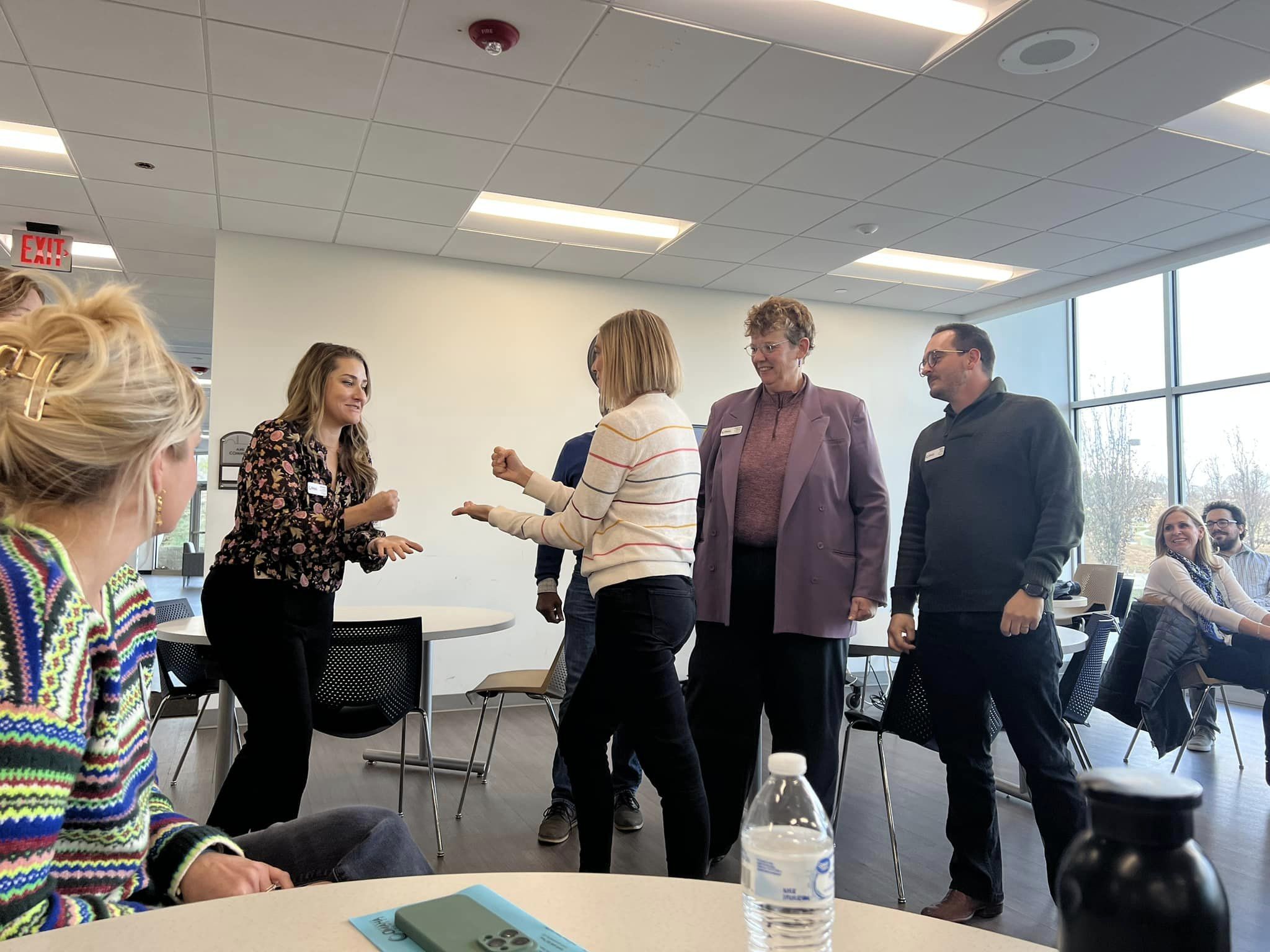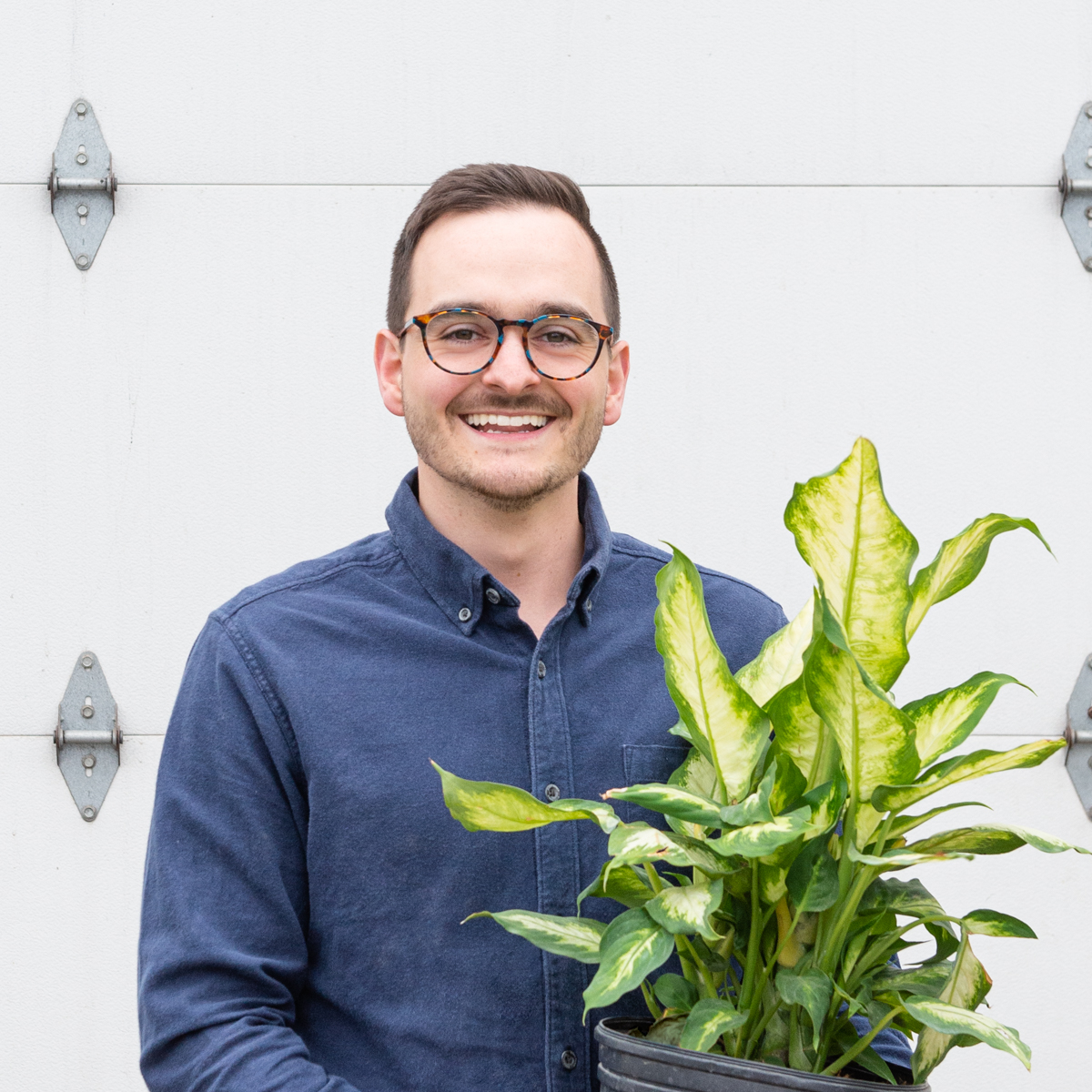Leadership Omaha is one of the longest running professional development programs at the Greater Omaha Chamber. Since 1978, participants have immersed themselves in a 10-month learning experience focused on molding them into more effective community leaders.
This year, we’re getting a look inside. We’ll follow Matt Wenz, Head of Mulhall’s Landscape, as he takes this 10-month journey.
Our justice system is complex, and a single day is insufficient to understand its intricacies fully. One day is enough to scratch the surface. During our day, we heard various perspectives, but there were some, including the victim and law enforcement perspectives, that we did not have time to hear. I hope to share my perspective on the day and how the experience increased my awareness. An awareness of the problems with our current justice system, but also the opportunities that lie within.
We began the day being processed into the Nebraska Correctional Youth Facility (NCYF). We placed our cell phones, watches, belts, and jackets in lockers before being searched and entering the sally port. The gates closed behind us, and we were escorted across the yard to the school building. Our day was kicked off by LO Alum Nick Juliano, who gave us an overview of RADIUS, a non-profit organization focusing on restoring relationships between youth, families, and their communities. Nick also introduced the juvenile justice system as a whole in Douglas County.
The next perspective we heard was the inside perspective of Loretta Wells, the warden of NCYF. I was struck by Warden Wells’ approach to the culture of NCYF, it was evident she was very passionate about her work and cared deeply about the residents. This also seemed true of the entire staff, from the correctional officers to the teachers. A guided facility tour led by her staff gave us an inside look at the facility and the NCYF culture. The NCYF facility is unique. It is smaller than the other Nebraska prisons, and many correctional officers mentioned that they know all the residents by name. There was true care for the individuals incarcerated at NCYF, emphasizing rehabilitation.
Additionally, we got the unique opportunity to hear from multiple residents at NCYF, which was one of the most powerful moments of the day. The testimonies came from three young men and a more experienced individual who is a positive influencer and role model in the facility. The group spoke about their dreams for the future, what reforms they would like to see within the juvenile justice system, and what landed them within the system.
We then had the opportunity to hear from the government perspective hearing from a panel that included:
- Honorable Vernon Daniels, Separate Juvenile Court of Douglas County
- Kim Hawekotte, Juvenile Justice Services, Douglas County
- Mary Visek, Juvenile Probation, Douglas County
The panel gave insight into where our juvenile justice system has been in the past, where we are currently, and where they see it progressing. Each shared that the juvenile justice system is rehabilitative, not punitive. The principle guiding juvenile justice reform in Douglas County is “Beneath every behavior is a feeling. And beneath every feeling is a need. And when we meet that need rather than focus on the behavior, we begin to deal with the cause, not the symptom”. The panel left me both overwhelmed with how broken the system was but also optimistic about the progress already underway on the long road ahead of us.
We were processed from the facility and headed to lunch at the Kitchen Table. After lunch, we headed to the Justice Center, where we were guided on a tour. While there has been some controversy surrounding the Justice Center, we were able to hear a different perspective. The architect spoke about all the effort that went into the trauma-informed design and integrating those principles into the building. The Justice Center provides a centralized location for all juvenile justice services, making the system easier for parents to navigate. Children will no longer need to be shackled and paraded from their holding cells to the courtroom; instead, they will be transported via secure hallways directly to the courtroom. Additionally, it features abundant natural light, welcoming seating areas, and individual conference rooms for families to use. We wrapped up the day hearing from a local non-profit, RISE, which works to break the generational cycles of incarceration through various in-prison and out-of-prison programming.
It was a packed day, but one unexpected interaction stands out above the others. Pre-COVID, I had the opportunity to be a guest facilitator with RISE in their in-prison program at Omaha Correctional Center (OCC) on Monday evenings. One of the other facilitators, MJ, was a program graduate and one of the incarcerated individuals who gave back and helped facilitate the class for new participants. MJ has a powerful and calming presence. He’s a great mentor. He is a great listener. He is compassionate, knows when tough love is in order, and has the skill to deliver a hard message with poise and care. He is someone I would consider a friend.
I had not seen MJ since March 2020, but as we were on our tour of the housing unit at NCYF, I saw his friendly and familiar face through a cell window. It was like seeing a friend from college who I hadn’t seen in three years. We had a brief catch-up through the cell door. MJ is one of the older individuals who are serving their time at NCYF to be a positive influence on the youth. I remember many OCC class members saying that MJ was why they were in RISE’s class and that MJ was why they were getting back on the right track. I do not doubt that MJ will continue to impact many lives within NCYF. But there is one thing that sticks with me. My visits to prison are brief. I always get to go back home. MJ will never get to leave.
It had been a couple of months since we’d last seen each other, and this seminar was a welcome reunion for our class. Our day kicked off at the civic center, where we engaged in a two-hour government simulation. We were divided into two cities and given various roles. I was the Parks and Recreation Director, and I channeled my inner Ron Swanson for the simulation.
A few things became apparent during the two-hour simulation: Many competing priorities and limited resources. Much deliberation was necessary to make the best possible decisions with the information provided to us. Many parties were involved, each with different opinions, and sometimes it felt like people would be unhappy no matter what we did. We had to work creatively as a team to find solutions the majority could get behind.
After a quick lunch at Doozy’s, we dove into a poverty simulation at Baird Holm. For many individuals and families, poverty is a harsh reality. For others, it’s unknown and misunderstood. Unless one has lived it, it isn’t easy to understand. The poverty simulation attempted to bridge the gap between misconception and understanding. In the simulation, I played the role of a 26-year-old male recently released from jail and still on probation. I lived at the homeless shelter with my girlfriend and an infant daughter. We faced many difficult decisions, including pawning our belongings to pay for bus fares or buying food over the clothing. It constantly felt like we only had terrible options, and the cycle repeated itself.
Two pieces from the simulation stood out to me:
- First, the facilitator asked us who was in a better position at the end of our simulated month than at the beginning, and most of us raised our hands. She pushed us further — were we really in a better position? What would it be like to do it for another month? I sat and reflected. While myself, my girlfriend, our infant was out of the homeless shelter and into stable housing, there weren’t any opportunities for me to make more money at work, and my girlfriend couldn’t get a job. One slight misstep or crisis, and we would be right back where we started.
- Second, the stress of the simulation was high, and it would pale in comparison to living in poverty daily. After the exercise, I could get back to my privileged life and retreat to comfort. The weight of the cycle of poverty became apparent. We felt there was no path to a more stable and secure life. It felt like the cards were stacked against us, and the system consisted of just enough handouts to keep us hopeful, but it would never be enough to break out of poverty.
The simulations served as a powerful reminder of the daily struggles that many individuals and families face. They emphasized the importance of empathy and understanding in creating a more just and equitable society. These simulations allowed us to gain new perspectives and a greater understanding of the complexity and nuance involved in daily issues facing our community.
We were greeted with another snowy morning — jokes of having the “coldest class ever” and “snowiest class ever” emerged. Our late start kicked off at the NorthStar Foundation for a panel on addressing poverty in Omaha. We heard from great organizations: NorthStar Foundation, Together, CHI, and Omaha Bridges Out of Poverty. All are working to address the various ways that Poverty impacts our city. Poverty takes many forms, but there is one common thread, it is a cycle that is extremely hard to break. Hearing the various presentations left me both hopeful and somber. Hopeful because of the great work in our community that is already happening, but also acknowledging how much further we have to go.
After lunch and a tour of NorthStar’s wonderful facility, we headed over to the Heart Ministry Center. There we had a chance to tour the property and see firsthand the various programs offered on-site. It was apparent that the phrase at the Heart Ministry Center, Dignity for All, is more than just a phrase. It is a way of life and an energy that ruminates throughout the center. We then wrapped up the day by hearing from Jeanee Weiss, from Children’s Hospital. She shared information on Nebraska’s youth mental health crisis, and what is being done to address it.
Reflecting on the day, I was struck by Mark’s testimony, which he shared with our group during our time at the Heart Ministry Center. He had a lasting message and a powerful challenge for the group, to live our truth. We heard about many different works happening in our city to address poverty, and when asked what to do about it, he challenged us to live our truth. No one can answer that question for us, we have to answer it for ourselves.
What are we going to do to tell the story of our day, craft the community in which we want to live, or live a life of impact? That is up to us.
Snow coated the pavement throughout the day as we spent our morning at the Village Empowerment Center, dispersed for lunch at local businesses, and wrapped up our day at WP Engine in the Ashton Building. The day offered an overview of economic development in Omaha, focusing on North Omaha, South Omaha, and Downtown Omaha.
Willie Barney, Founder and President of the Empowerment Network, kicked off the day by providing us with an overview of the various services offered at the Village Empowerment Center. He walked us through how the organization started with a group of concerned community members with a common goal, forging ahead with the group they had, refusing to wait for everyone. Today, that small group of concerned community members has grown into a nationally recognized network that is strengthening our community and reversing historical decisions that have left broad cross-sections of our community disenfranchised.
We then had the privilege of hearing from Dr. Cheryl Ingram, Nancy Williams, and Candice Price about their experiences as business owners. Each of them spoke about the joys, but also the struggles, of being a business owner, specifically the additional pressure and adversity faced as minority business owners.
The rest of the day was filled with learning about many exciting projects and developments in Omaha’s future:
- LB1024 Capital Projects Fund: Funding for projects with the goals of fostering desirable transformation, fundamental change, and long-lasting economic growth in the communities of North and South Omaha.
- Omaha Streetcar: A fixed-rail electric streetcar to run from 42nd and Farnam to 10th and Harney.
- Millwork Commons: A community of innovative people and enterprises.
- Builders District: A mixed-use development in the urban core.
- Omaha Community Foundation: Strengthening our community through powerful partnerships, building connections between people, ideas, and funding.
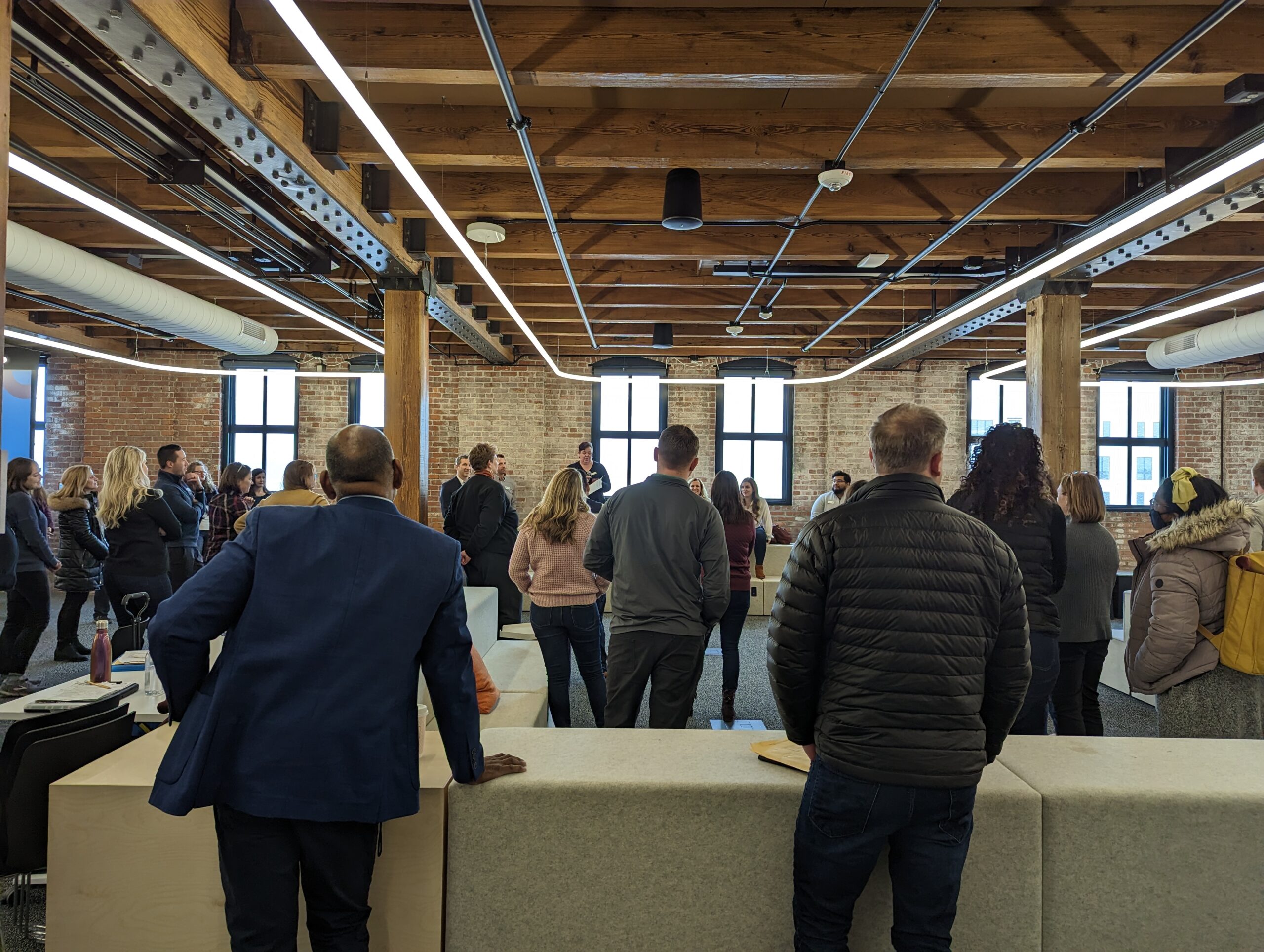
The day left me excited and optimistic for Omaha’s future, and equally a sense of responsibility and the challenge to be an active part of helping create the city we want to live in. During lunch, we split into groups of seven and went out to local restaurants for lunch. Four of the seven groups all went to Ahmad’s, where Ahmad happened to be working alone. Anna recognized an opportunity to step up and she was quickly pouring water glasses for the group. She was then joined by Sarah and many more as a small group of LO45 members worked alongside Ahmad to cook, plate, and serve the group, and even another table of complete strangers. It is surely a lunch that our group will remember forever and a true testament to the power of one person, Anna, leading the way to create a community that we are proud to call home.
Willie Barney left us with the message of “It’s Possible,” which is the best way to summarize the day. With a small group of committed individuals, aligned in vision and acting with intention, anything is possible.
We began our seminar with a warm welcome to QLI’s campus. For many of us, it was our first time visiting. The opening session was hosted by Inclusive Communities, exploring the diversity of our network as well as the role implicit bias has had in shaping our network. The introspective activity was a reflective start to a day diving deeper into inclusivity and intentionality, calling us to take a candid look into our own lives, the people we spend time with, where are we in our comfort zones, and ask where our fears are holding us back from learning and growth.
Next, we had the privilege to hear the lived experiences of different members of the QLI community. Each story was unique, but the common thread was that of vulnerability, intentionality, and true partnership. There was not a dry eye in the house hearing these testimonies. It is hard to place, but there was a beautiful aura that surrounded us during our morning at QLI. Our tour guides mentioned that life is just different inside the gates, and it was a true testament to the power of intentionality, where people are encouraged to bring their best selves into an incredible environment of healing.
In the afternoon we ventured over to Tri Faith Initiative, where a mosque, synagogue, and church all sit on the same campus. After a quick game of ultimate rock paper scissors, we were led through an overview of the religious landscape of the US prior to taking a deeper dive into Islam with a tour from the Imam.
I believe when you experience something truly special, there are no words that can touch the emotional impact the experience had on oneself. It is hard to summarize the day in words, to find a quote that represents a piece of the day’s experience, or a picture that can convey the emotion – they simply just don’t do the day justice. For a small snippet into our day, here is a look into one of many touching stories that create that special aura at QLI.
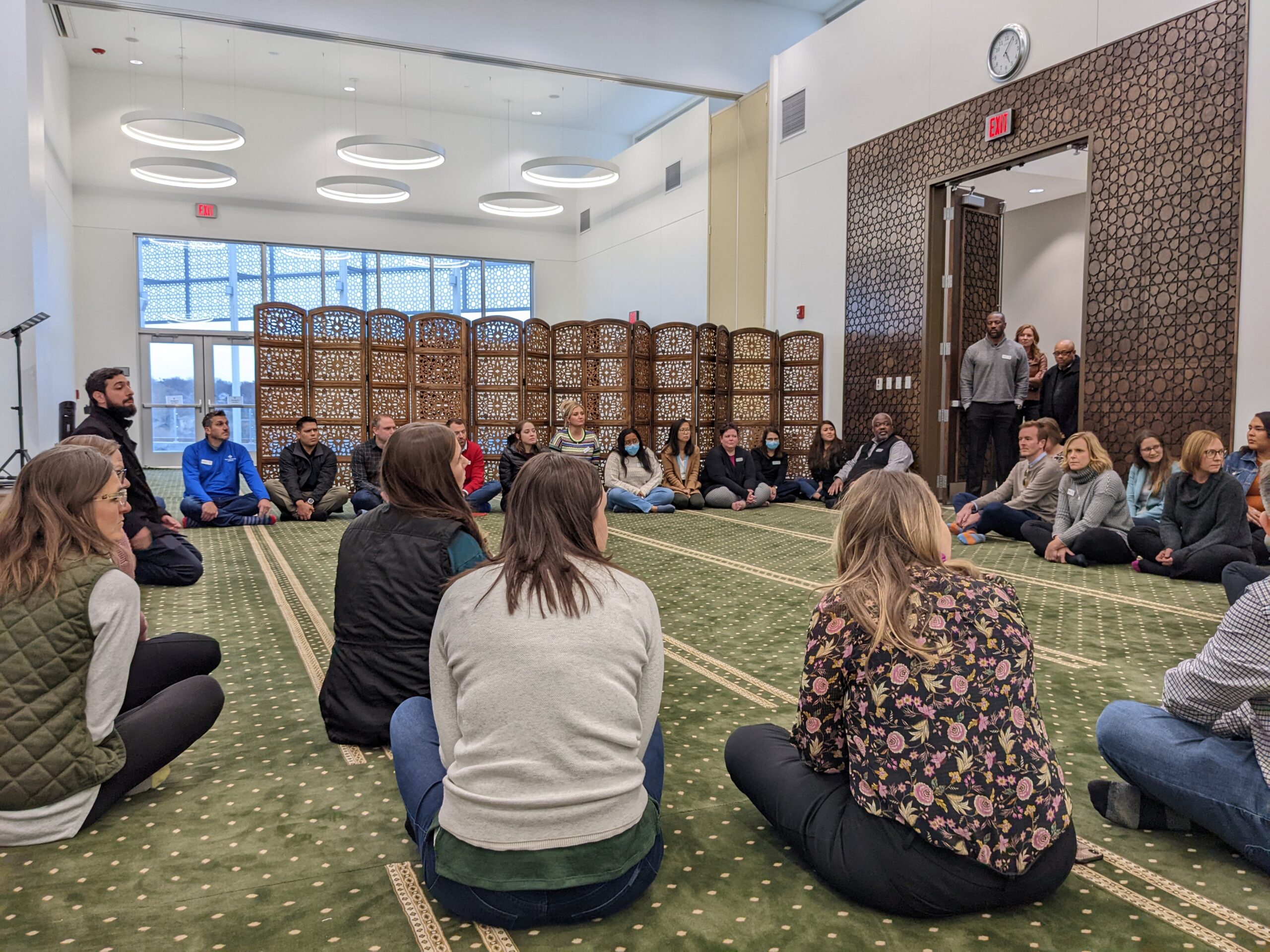
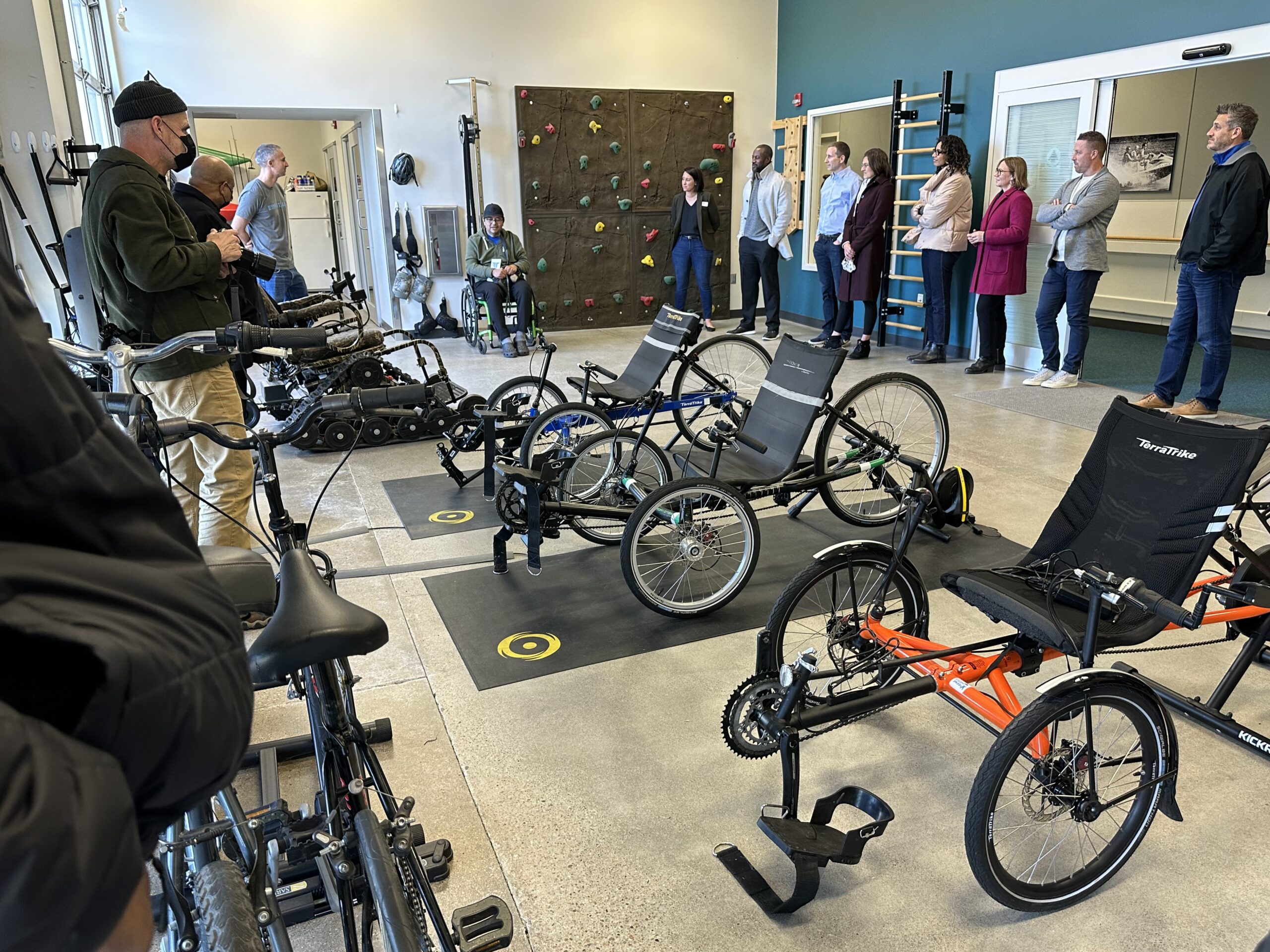
It was a powerful seminar visiting organizations born out of concerned community members and a commitment to make a difference. For myself, the day fueled a series of internal reflections: why is diversity valuable; for whom are we creating more accessible and inclusive environment; what changes, both mentally and tangibly, are necessary to enact our visions for an inclusive community; and where in my life can I be challenged and criticized to learn and grow?
When it comes down to it, my biggest takeaway is continuing to ask myself: how am I living my life leading with intentionality and vulnerability.
October
City Environment
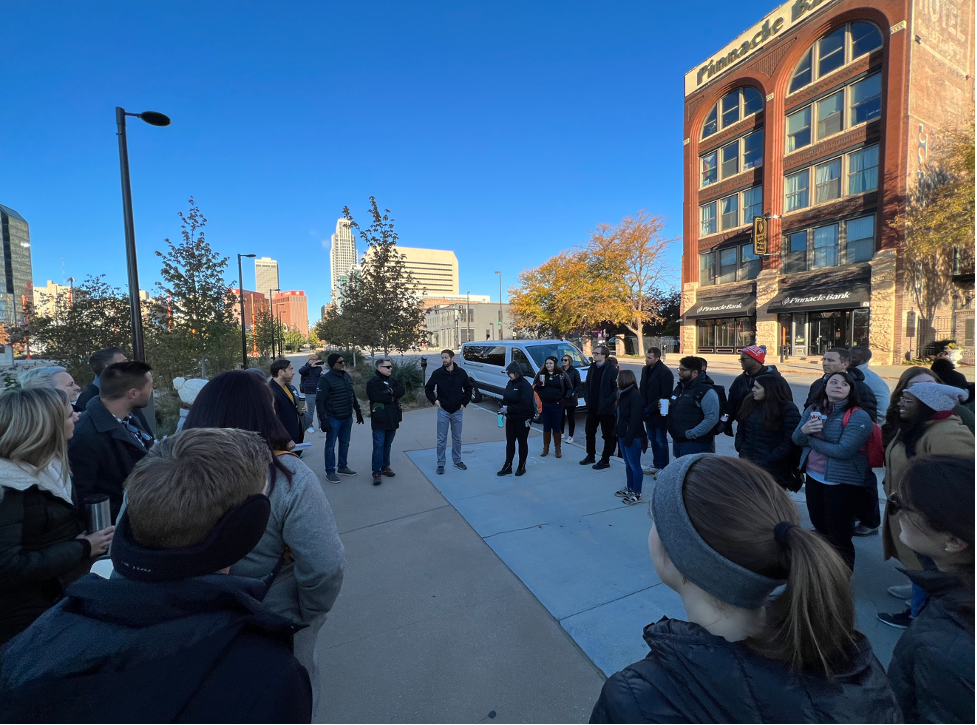
The brisk October air greeted us as we waited for the ORBT bus like kids awaiting a school bus. All bundled up, the entire group headed east to Downtown. For many of us, this was our first ORBT ride and was a welcomed new experience. Riding the bus allowed us the freedom to have conversations, and to watch as the built environment transformed around us on our journey. We disembarked on 10th and Douglas, strolled through the Gene Leahy Mall and made our way to KANEKO where we spent the morning learning about arts, culture, and creative spacemaking!
When we think of spacemaking within our community, many questions come to mind. What do we want out of our city? What do we need to feel culturally enhanced and whole? How are we creating space for more voices, new spaces, and new perspectives? What does inclusion look like when everyone has a different experience in a space? Our lineup of speakers offered insights into these questions, but we were again left with more questions than answers. Questions that prompted the sharing of our unique experiences with our neighbors, and listening and learning from their experiences. It also left us with a desire to try and find how to utilize our diverse perspectives to grow and amplify the voices of others.
After a morning of hearing from various creatives in our community, we ate some lunch, enjoyed the art around KANEKO, and took a quick tour of the Omaha Mobile Stage. Next, we embarked on a community tour of North Omaha, stopping at the Union for Contemporary Art before heading to South Omaha. As we traveled the streets as tourists in our own backyard, we learned more about Omaha’s history, heard stories, and got snapshots of rich culture sprinkled throughout our city. With a new eye for creative spacemaking, murals were brighter, business fronts livelier and history richer. Each of us leaving with a new or renewed appreciation for the various spaces in our city and a list of new restaurants and businesses to try.
As I reflect on the seminar and creative spacemaking in our community, one section of Richard Florida’s “Rise of the Creative Class” stands out:
More and more businesses understand that ethos and are making the adaptations necessary to attract and retain creative class employees—everything from relaxed dress codes, flexible schedules, and new work rules in the office to hiring recruiters who throw Frisbees. Most civic leaders, however, have failed to understand that what is true for corporations is also true for cities and regions: Places that succeed in attracting and retaining creative class people prosper; those that fail don’t.
September
Opening Retreat

The two-day opening retreat absolutely flew by, and a part of me felt like I was a kid back at summer camp. There was the initial excitement and nervousness as the retreat began, and everyone started getting to know each other.
But this retreat carried a different tone than other weekend retreats or networking events. There was an authenticity and openness to each and every conversation. Through our introductions, nighttime skits, and discussions throughout the day, everyone was truly leaning into the experience, and strangers started to become friends. As the retreat progressed, the normal walls and barriers we as humans tend to construct were lowered, creating an amazing space for sharing, creativity, and authenticity.
Day two was all about discovery of self and intimate connection. We learned about our thinking preferences, talked about Omaha today and tomorrow, and our small group pairings were revealed.
Our small groups – mere acquaintances just hours before – became tight-knit little communities as we shared six-minute life stories, with details normally reserved for those closest to us with years of trust. The activities and exercises progressed, and we continued to learn more about each other and our community. Ultimately, I left the retreat excited and eager for the journey ahead.
Now, reflecting on the opening retreat, I keep coming back to two things: vulnerability and questions.
Vulnerability, a la Brené Brown in her TED talk, The Power of Vulnerability. Vulnerability as a necessary means to connection, belonging, and joy. This retreat was such a beautiful experience of complete strangers electing to be a part of something more – tied together by a shared passion we have yet to discover and an openness to journey as a group to see where the path leads.
And questions:
- What will the next 10 months hold?
- What does the future of Omaha look like?
- What impact can I have on my community?
- Where are my talents and interests best utilized?
- How can I learn from others along this journey?
- Will it all be worth it?
The retreat provided more questions than answers. And perhaps that’s the point: sitting in the discomfort, uncertainty, and imperfection, and being okay with it. If the answers were easy, societal problems and inequity wouldn’t exist, and we certainly wouldn’t need programs like Leadership Omaha to bring together diverse cross-sections of our community to learn more and discuss them.
So at the onset of Class 45’s journey, I have in the forefront of my mind an excerpt from Letters to a Young Poet, by Rainer Maria Rilke:
“…I would like to beg you, dear Sir, as well as I can, to have patience with everything unresolved in your heart and to try to love the questions themselves as if they were locked rooms or books written in a very foreign language. Don’t search for the answers, which could not be given to you now, because you would not be able to live them. And the point is, to live everything. Live the questions now. Perhaps then, someday far in the future, you will gradually, without even noticing it, live your way into the answer.”
Matt Wenz
Matt has a natural ability to bring people together toward a common purpose. In 2021, after leaving the world of public accounting, Matt joined the Mulhall’s team as a Controller and quickly discovered a new-found passion for beautiful landscapes and the work involved to create and maintain them. Now, as Head of Mulhall’s Landscape, he’s able to use his business background, a love for collaboration, and his appreciation for the natural world to amplify the impact of the Mulhall’s Landscape team here in Omaha and the surrounding community. Matt and his wife Annie love spending time with family and friends, being outside and exploring the Omaha community.
Be the leader you know you can be.
Leadership Omaha gives community leaders a chance to shine. If you have a vision for the future of Greater Omaha, then this is the program for you.
